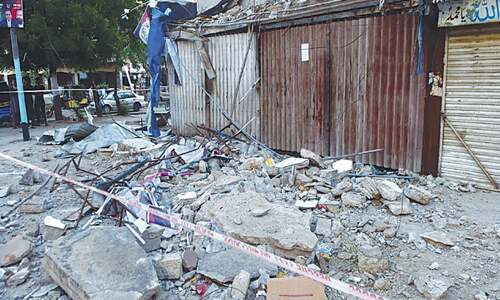
YOU can only wonder about the plurality of cultures and religions which was a regular feature of everyday life in Karachi half a century back. It even existed at a time when Pakistan had just fought a full-blown war with India. It did not matter to Karachiites whether you were a Hindu, Christian or Muslim. Now compare that spirit to what you have been witnessing lately in the country in the name of religion, and yesteryear would seem like a dream that could never be realised.
Here’s a potent example of how things were in 1966. On Jan 26, East Pakistani Hindus living in Karachi celebrated Saraswati Puja with traditional fervour at the Bath Island residence of K. B. Rai Choudhury, deputy secretary to the government of Pakistan in the ministry of finance. The event was largely attended by people belonging to different spheres of life. Ah, East Pakistani Hindus: haven’t heard these words in one breath in a long while.
The very next day in the early hours of the morning, Jan 27, the grand mufti of Syria, Al Shaikh Ahmed Kiftaru, passed through Karachi on his way from Damascus to Jakarta. He was accompanied by the mufti of the city of Tartus, Al Shaikh Abdul Sattar Al Syed. How’s that for plurality!
The considerateness could be gauged from other aspects of life as well. Cooperative societies had begun to sprung up in the city but not, unlike today, without proper checks and balances. On Jan 25, Syed Saeed Jafry, chairman of the Pakistan Employees Cooperative Housing Society, said that a nine-member special committee had been appointed to examine the working of the society (PECHS), its constitution, bylaws, finances and administration. He said complete reorganisation of the society was needed. Again, draw a parallel of the decision with the way societies and even apartment unions that function in the 21st century Karachi, and the two would appear to be situations emanating from totally different civic systems.
And then there was, and will always be, the vibrant cultural facet of the city by the sea. An exhibition of paintings made by more than a dozen young artists opened at the Arts Council on Jan 28. My word, what a stellar lineup it was. Well, stellar in the sense that most of them went on to become big names in the field of art. They included the likes of Naz Ikramullah, Kohari, Mansur Rahi, Jamil Naqsh, Hajra Zuberi, Mansur Aye and Anwar Maqsood. Yes, the same Anwar Maqsood who is now also known, probably better known, as one of the finest satirists in the country.
Remaining on the subject of art, on Jan 29, Madame Hushang Ansary, wife of the then ambassador of Iran to Pakistan, visited the headquarters of the All Pakistan Women’s Association in Karachi. There she presented for Kashmiri refugees a painting titled ‘mother and child’ by Iranian artist Imadian to Begum Anwar Hidayatullah. The artwork was put on sale on Jan 30 at the Kashmir Bazaar held at the YMCA.
Published in Dawn, January 25th, 2016














































Dear visitor, the comments section is undergoing an overhaul and will return soon.